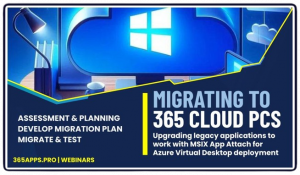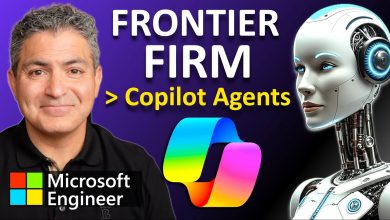Intune Cloud Native Management: Prepare for AI and Next-Gen Cloud PCs
How Intune’s cloud-native approach empowers organizations to streamline operations, bolster security, and lay the foundation for AI-enabled and cloud PC-driven workplaces.
 As organizations increasingly embrace hybrid and remote work models, the demand for robust, scalable, and secure endpoint management solutions has never been greater.
As organizations increasingly embrace hybrid and remote work models, the demand for robust, scalable, and secure endpoint management solutions has never been greater.
Microsoft Intune, a cloud-based unified endpoint management (UEM) platform, is at the forefront of this transformation, offering IT teams the tools to manage devices, enhance security, and prepare for the future of computing—driven by AI and next-generation cloud PCs.
This article explores how Intune’s cloud-native approach empowers organizations to streamline operations, bolster security, and lay the foundation for AI-enabled and cloud PC-driven workplaces.
The Shift to Cloud-Native Endpoint Management
Cloud-native endpoint management represents a paradigm shift from traditional on-premises solutions like Microsoft System Center Configuration Manager (SCCM).
By definition, a cloud-native Windows endpoint is joined to Microsoft Entra ID and enrolled in Intune, decoupling devices from on-premises infrastructure dependencies. This approach aligns with organizational goals to reduce physical infrastructure, simplify IT operations, and enable seamless management of devices across Windows, macOS, iOS, iPadOS, Android, and Linux platforms.
For organizations transitioning from legacy systems, Intune supports a phased approach. Existing devices can be co-managed with SCCM or hybrid Entra joined, while new devices can leverage Windows Autopilot for rapid, cloud-native provisioning.
Preparing for AI-Driven Workplaces with Intune
AI is transforming the IT landscape, and Intune is well-positioned to support this evolution. The integration of Microsoft Copilot in Intune introduces generative AI capabilities that enhance IT efficiency and decision-making. Copilot provides actionable insights, summarizes policies, recommends settings, and assists with troubleshooting, freeing IT teams to focus on strategic initiatives.
As AI PCs with neural processing units (NPUs) and Arm processors become mainstream, Intune ensures seamless onboarding and management. These devices, designed for AI workloads, integrate effortlessly with Intune’s cloud-native framework, enabling IT teams to deploy policies and applications tailored to AI-driven use cases.
Practical Steps for AI Readiness
To prepare for AI-driven workplaces, organizations should:
- Adopt Cloud-Native Endpoints: Ensure devices are Entra ID-joined and Intune-enrolled to leverage AI capabilities like Copilot.
- Implement Security Baselines: Use Intune’s pre-configured security baselines to enforce encryption, compliance policies, and Conditional Access for AI-enabled devices.
- Leverage Analytics and Reporting: Utilize Intune’s AI-powered reporting tools to monitor device compliance and security posture, ensuring alignment with regulatory standards.
- Train IT Teams: Invest in training to familiarize IT staff with Copilot and AI-driven workflows, fostering a growth mindset for cloud-native management.
Windows 365 Cloud PCs represent the future of virtualized computing, delivering secure, scalable desktop experiences from the cloud. Intune plays a pivotal role in managing these virtual endpoints alongside physical devices, providing a unified management experience



